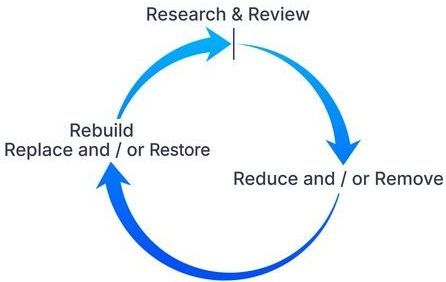What is Cyber Resilience
Cyber resilience is the ability of an organization to maintain its core functions and deliver intended outcomes even when facing cyberattacks or disruptions. It's about being prepared, adaptable, and able to recover quickly from security incidents. Building cyber resilience involves a combination of technical, procedural, and strategic measures, as well as fostering a culture of security awareness throughout the organization.
Here's a breakdown of key aspects of building cyber resilience
By focusing on these key areas, organizations can significantly enhance their cyber resilience and better protect themselves against the ever-evolving threat landscape.
Risk Assessment and Planning
Identify critical assets and vulnerabilities
Understand what data, systems, and processes are essential to your business and where weaknesses lie.
Conduct regular risk assessments
Continuously evaluate potential threats and vulnerabilities to prioritize security efforts.
Develop a comprehensive cyber resilience strategy
Create a plan that outlines how the organization will respond to and recover from cyber incidents, including business continuity and disaster recovery plans.
Establish clear roles and responsibilities
Define who is responsible for what in terms of cybersecurity and incident response.
Implement security controls
Deploy technologies and processes to protect against threats, such as firewalls, intrusion detection systems, and multi-factor authentication.
Practice incident response
Regularly test and refine your incident response plan through simulations and tabletop exercises.
Building a Security-Conscious Culture
Employee training and awareness
Educate employees about cybersecurity risks, best practices, and their role in maintaining a secure environment.
Foster a culture of reporting
Encourage employees to report suspicious activity or potential security breaches without fear of reprisal.
Promote open communication
Ensure that cybersecurity information is shared openly and transparently throughout the organization.
Leadership buy-in and support
Cybersecurity must be a priority for leadership, with clear communication and resources allocated to support resilience efforts.
Leveraging Technology and Automation
Implement robust backup and recovery solutions
Ensure regular backups of critical data and systems, and test them to verify their effectiveness.
Utilize threat detection and response technologies
Employ tools that can identify and respond to threats in real-time, such as intrusion detection systems and security information and event management (SIEM) systems.
Embrace automation
Automate security tasks, such as patching, threat detection, and incident response, to reduce manual effort and improve efficiency.
Utilize AI and machine learning
Leverage AI-powered tools for threat detection, anomaly detection, and predictive analysis.
Continuous Monitoring & Improvement
Continuous security monitoring
Actively monitor your systems and networks for suspicious activity and potential threats.
Regularly review and update security controls
Stay ahead of evolving threats by regularly reviewing and updating your security controls.
Adapt to changing threat landscape
Continuously learn from incidents and adapt your strategies and technologies to address new and emerging threats.
Stay informed about emerging threats
Keep abreast of the latest cybersecurity trends, vulnerabilities, and attack techniques.
Cyber resilience that keeps your business running.
Building cyber resilience is essential for organizations to withstand, respond to, and recover from cyber threats and incidents.
We can build a robust cyber resilience framework to prevent, detect, and respond to cyber threats, minimizing their potential impact on business operations and reputation.
Key strategies to enhance
your organization's cyber resilience
By adopting these strategies, your organization can build a robust cyber resilience framework, better equipping it to prevent, detect, and respond to cyber threats, minimizing their potential impact on business operations and reputation.
Establish a Strong Security Culture
Cultivate a culture of security awareness through regular training and communication, emphasizing the importance of secure practices among employees.
Implement Multi-Layered Defenses
Adopt a defense-in-depth approach, using various security technologies and processes to safeguard against cyber threats.
Conduct Regular Risk Assessments
Evaluate your organization's exposure to cyber risks and vulnerabilities, prioritizing mitigation efforts accordingly.
Develop Business Continuity Plans
Create comprehensive plans to maintain critical business operations in the event of a cyber incident.
Perform Regular Backups
Ensure regular data backups are conducted and securely stored, allowing for quick restoration in case of data loss.
Establish Incident Response Plans
Develop detailed response plans that outline roles, responsibilities, and communication strategies during a cyber incident.
Partner with Security Professionals
Collaborate with cybersecurity experts and service providers to access specialized knowledge, tools, and resources for improving your organization's cyber resilience.
Leverage Threat Intelligence
Monitor emerging threats, vulnerabilities, and security trends, adapting your defenses to stay ahead of evolving cyber risks.
Test and Validate Defenses
Conduct regular security testing, such as vulnerability scanning and penetration testing, to assess the effectiveness of your security measures.
Monitor, Detect, and Respond
Implement continuous security monitoring and detection capabilities, enabling rapid response and mitigation of cyber incidents.
Cyber Compliance that keeps your business running.
Useful Links
Contact Us
2408867687
Hello@c3aaS.com
All Rights Reserved | Continuous Compliance
